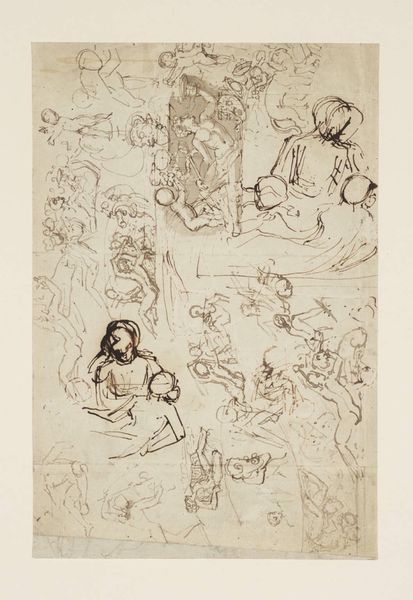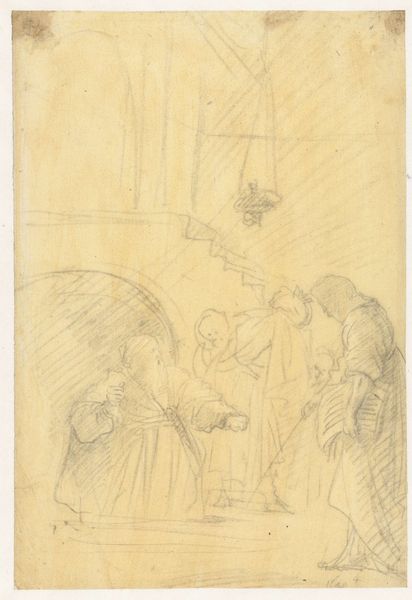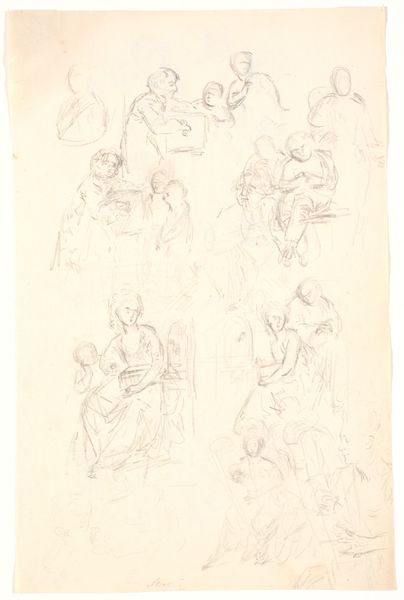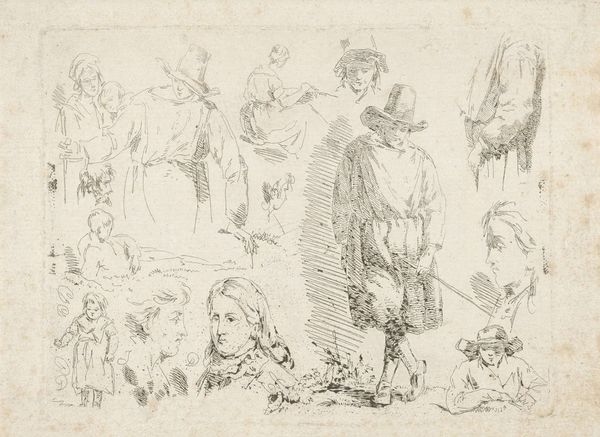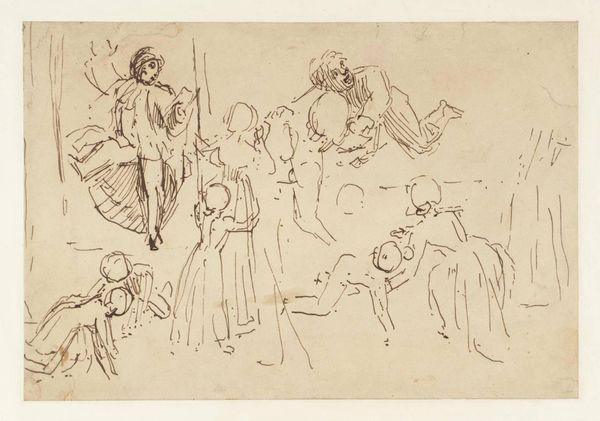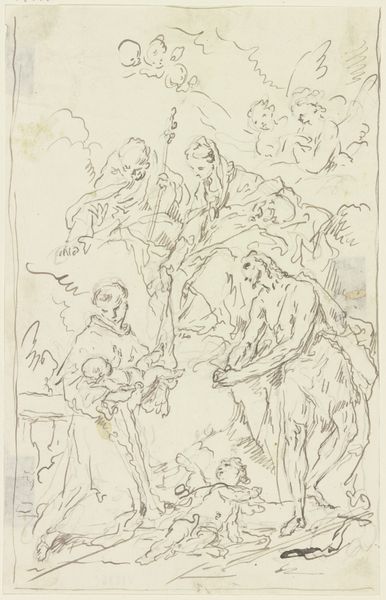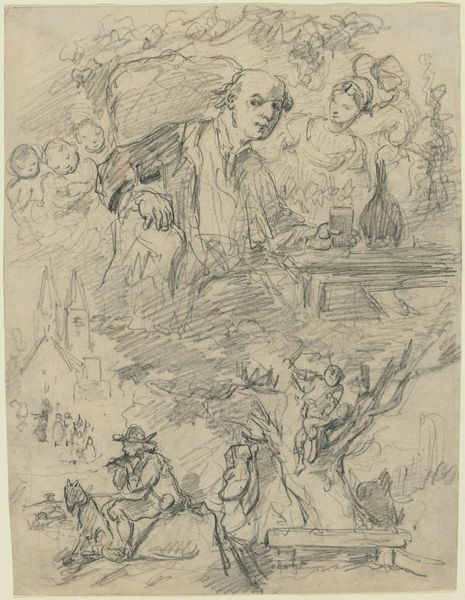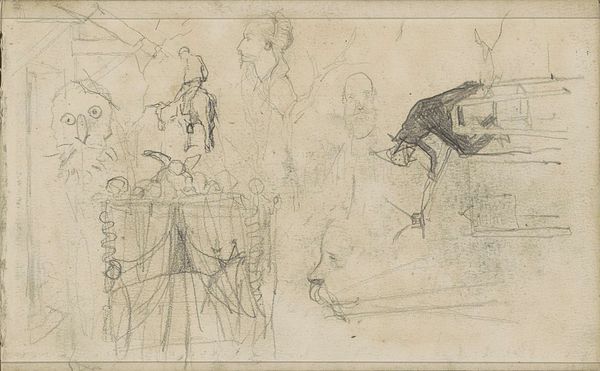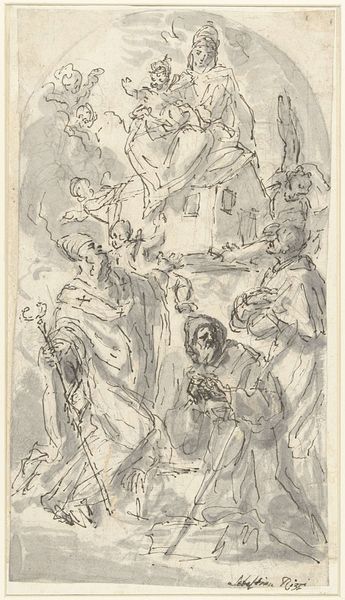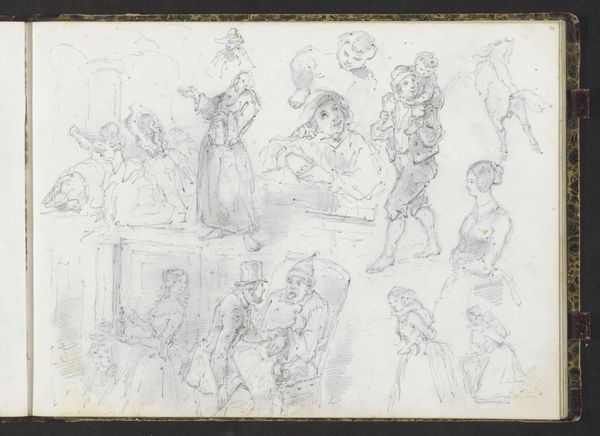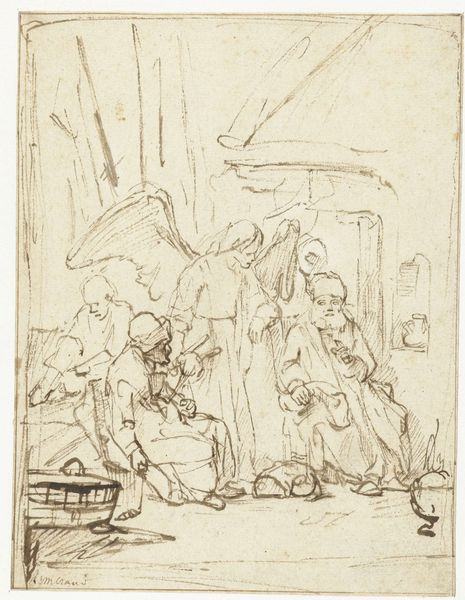
drawing, ink, pen
#
portrait
#
drawing
#
ink drawing
#
baroque
#
pen sketch
#
pencil sketch
#
etching
#
figuration
#
ink
#
pen
Dimensions: height 319 mm, width 202 mm
Copyright: Rijks Museum: Open Domain
Editor: This drawing, "Studies naar figuren," is attributed to Peter Paul Rubens and thought to be from sometime between 1587 and 1640. It's made of ink on paper and is currently held at the Rijksmuseum. It gives the impression of looking over someone’s shoulder as they brainstorm a composition. What strikes you most about this collection of sketches? Curator: The rhythmic arrangement immediately stands out. Notice how Rubens balances densely worked areas with sections of blank paper. These white spaces function almost as visual pauses, preventing the eye from becoming overwhelmed and directing our focus strategically. It is through a calculated management of visual density that our attention is navigated. Do you agree? Editor: Yes, I see that now. There's a dynamic contrast that keeps the drawing from feeling static, despite it just being a series of figures in robes. Can you expand on the rhythm some more? Curator: The line quality itself is a critical element. Look at the variation in weight, from the delicate hatching defining the folds of the drapery to the bolder outlines indicating a figure’s posture. The deliberate oscillation between detail and suggestion generates a palpable sense of movement and three-dimensionality on a flat surface, wouldn't you say? It makes some of the forms feel incomplete and ephemeral. Editor: It definitely gives a sense of constant revision and the immediacy of the creative process. This isn’t just about depicting figures; it’s about capturing the dynamism of thought. I appreciate the emphasis on the active versus passive forms. Thanks! Curator: Absolutely. Considering Rubens's approach to structure, line, and composition reveals this drawing as more than just a preparatory exercise, it provides us insight into his meticulous preparation to consider how different masses of colour interact on the same surface.
Comments
No comments
Be the first to comment and join the conversation on the ultimate creative platform.
